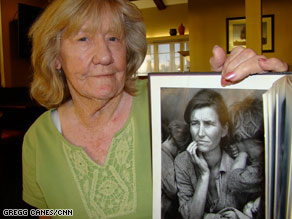 We're here! Apple's about to unveil the iPhone 3.0 OS, and Brian Lam and I are going to be covering it live. LIVE. And don't forget to play pizza bingo while you follow the keynote.
We're here! Apple's about to unveil the iPhone 3.0 OS, and Brian Lam and I are going to be covering it live. LIVE. And don't forget to play pizza bingo while you follow the keynote.How iPhone 3.0 Will Feel Different
 The third iteration of iPhone software doesn't just add features like copy and paste. There's a lot new going on in terms of usability and interface that every non-power user will appreciate.
The third iteration of iPhone software doesn't just add features like copy and paste. There's a lot new going on in terms of usability and interface that every non-power user will appreciate.
Search Everything With Spotlight
 Instead of digging through 10 screens for your apps, search them out just like in OS X through Spotlight.
Instead of digging through 10 screens for your apps, search them out just like in OS X through Spotlight.
Upgrade Applications Within Applications
 Now, apps can solicit your business through in-app prompts. A game developer could offer to sell you more levels and a magazine could add issues to your subscription. The implementation could be annoying, like shareware and absurd microtransactions, or useful, seeing as you can buy desired upgrades within the application, bypassing the App Store when it's unnecessary.
Now, apps can solicit your business through in-app prompts. A game developer could offer to sell you more levels and a magazine could add issues to your subscription. The implementation could be annoying, like shareware and absurd microtransactions, or useful, seeing as you can buy desired upgrades within the application, bypassing the App Store when it's unnecessary.
Use Custom Accessory Controls
 New custom applications can be designed to work with specific accessories. Your iPhone can become the control panel for any participating manufacturer's device.
New custom applications can be designed to work with specific accessories. Your iPhone can become the control panel for any participating manufacturer's device.
Navigate Google Maps In Any Participating App, Along With Turn By Turn Directions
 Do you like Yelp but you hate leaving Yelp to go to the proper Google Maps? Now that developers can embed Google Maps directly into their applications, complete with pinch zoom functionality, hopefully these days of inconvenience will be over—especially when coupled with new turn by turn directions support.
Do you like Yelp but you hate leaving Yelp to go to the proper Google Maps? Now that developers can embed Google Maps directly into their applications, complete with pinch zoom functionality, hopefully these days of inconvenience will be over—especially when coupled with new turn by turn directions support.
Cutting, Copying and Pasting Now Possible
 Sounds simple enough. Double tap text to bring up cut/copy/paste options and drag left or right to expand your selection. Double tap again to paste, or shake the phone to undo. Since CC&P is part of the core software, it should work in all apps that want to use it.
Sounds simple enough. Double tap text to bring up cut/copy/paste options and drag left or right to expand your selection. Double tap again to paste, or shake the phone to undo. Since CC&P is part of the core software, it should work in all apps that want to use it.
Email Multiple Pictures At Once
Thanks to CC&P, users can copy multiple pictures and then paste them in an email to send all together. We don't have a nifty photo of this just yet.
Write Emails in Landscape Mode
 Before, you had to use a third party application to write emails in landscape mode. Now, the wide keyboard comes to all core iPhone applications.
Before, you had to use a third party application to write emails in landscape mode. Now, the wide keyboard comes to all core iPhone applications.
Send Photos Over MMS
 The iPhone gets photo support for multimedia messaging. Plus, you can forward messages and stuff, too.
The iPhone gets photo support for multimedia messaging. Plus, you can forward messages and stuff, too.
'IT' 카테고리의 다른 글
| Review: How an iPod can be a poor man's iPhone (0) | 2009.03.19 |
|---|---|
| Ahead of the Bell: Analysts cheer iPhone update (0) | 2009.03.18 |
| Apple says it is expanding iPhone features (0) | 2009.03.18 |
| Source: iPhone 3.0 apps to play well with other devices (0) | 2009.03.17 |
| Shaking Up Advertising (0) | 2009.03.17 |



